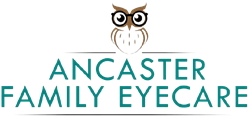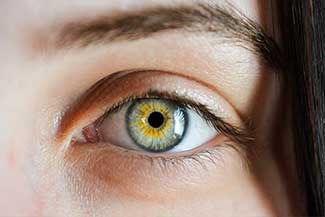
Treatments for Keratoconus
What is Keratoconus?
Keratoconus (KC) is an eye condition in which the cornea weakens and thins over time, causing the development of a cone-like bulge and optical irregularity of the cornea. This condition occurs in approximately 1 in 2,000 individuals.
Keratoconus typically begins to affect people in their late teens or early twenties, and may progress for 10-20 years before slowing or stabilizing. Each eye is affected differently. In the early stages of keratoconus, you might experience mildly blurred vision, difficulty seeing at night, frequent headaches, an increased sensitivity to light, and the need to frequently change your eyeglass prescription.
During later stages of keratoconus, you may experience higher levels of blurry and distorted vision, an increase of nearsightedness or astigmatism, or be unable to wear contact lenses, as they will no longer fit properly, no longer provide clear vision and be uncomfortable.
Keratoconus Treatments
There are a variety of treatment options for keratoconus, including rigid gas permeable (RGP) contact lenses, scleral contact lenses, intracorneal ring segment implants and more. Learn about these options below.
Eyeglasses or Soft Contact Lenses
Wearing prescription lenses improves your vision because the lenses bend rays of light to focus images on the retina inside your eye. The cornea is the clear dome-shaped part of the front of the eye and is responsible for the majority of the focusing power of the eye. However, as keratoconus progresses, the cornea becomes more irregularly shaped and stronger optical lenses are required for clear vision.
Even though eyeglasses and soft contact lenses may help correct refractive errors like nearsightedness and farsightedness, some vision issues associated with keratoconus may still persist due to the irregular corneal shape, such as light sensitivity or discomfort.
Customized Contact Lenses (RGP, Scleral, Hybrid)
Rigid gas permeable (RGP) contact lenses and custom-fit scleral contact lenses create a smooth, uniform surface, allowing the light to be clearly focused. A saline solution fills in the space between the rigid lens and the cornea, “masking” the irregular corneal shape. Contact lens fittings may become more challenging as keratoconus becomes more advanced.
Scleral contact lenses in particular help with keratoconus because the lens creates a dome over the irregular cornea and functions as the new refractive surface of the eye. They are preferred by most eye doctors who provide custom-fit contact lenses because of their superior comfort & versatility.
Corneal Cross-Linking (CXL)
This minimally invasive procedure uses Riboflavin eye drops plus UVA light to slow keratoconus progression. Riboflavin eye drops are activated with UVA light to create additional cross-link bonds in the cornea, making it stiffer. CXL does not restore vision that has already been lost and does not eliminate the need for glasses or contact lenses. But it can help limit the progression of keratoconus.
Intracorneal Ring Segments (ICRS)
These specifically designed implants are made of medical plastic that are surgically placed under the surface of the cornea to help improve the corneal shape. The ICRS are implanted into the cornea to flatten the steep part of the cone into a more regular shape. This surgery does not slow keratoconus progression and glasses or contact lenses are usually still needed.
Corneal Transplant Surgery
This surgery replaces part of the cornea with donor tissue to improve corneal shape and/or clarity. The irregular or scarred corneal tissue is replaced with donor tissue from a cornea without keratoconus. Corneal transplant surgery is usually reserved for advanced cases, when the patient can no longer tolerate contact lenses or vision is severely compromised.
If you are concerned you may have keratoconus, reach out to Ancaster Scleral Lens Centre today. We can help. With expert experience and a deep understanding of keratoconus, we can recommend the treatment option that is best for you in order to maximize your comfort and ensure you have clear, consistent vision.
Our practice serves patients from Hamilton area, Burlington, Brantford, and Cambridge, Ontario and surrounding communities.













